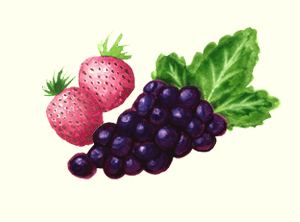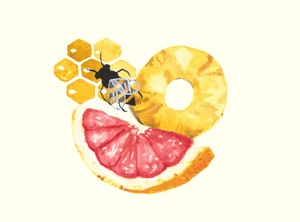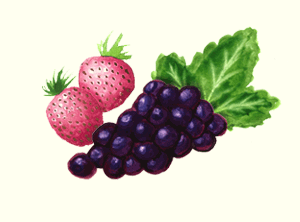Our Wines
Grown & Produced in the Pocono Mountains

Dry Red | Dry White | Rosé | Sweet | Buy Online
Through years of trial and error, in deference to our local climate and our soils, we’ve settled on a number of both French-American (bred in France, such as our Seyval and Marechal Foch) and American-French hybrids (bred in America, like our Cayuga and Frontenac). While in the past we’ve grown some European varieties like Chardonnay and Pinot Noir and produced some wines of note, their sensitivity to disease and the amount of physical effort required in the vineyard for them to thrive has led us to phase them out. After all, the West End of Monroe County is certainly not the south of France.
Dry Red Wine
The distinctive features of our dry red wines are their fruitiness due to cool (let’s be real, cold) temperatures during the latter part of the growing season. They have high acidity, again due to cool growing conditions, and soft / less conspicuous tannins due to the inherent characteristics of the varieties we grow.
Marechal Foch

An old variety from the Loire Valley region of France, bred during the early 1900’s by French vine breeder Eugène Kuhlmann, named for . Small clusters made up of dark, tiny berries. A favorite of our local birds. Wines are always full-bodied with smooth, supple tannins and pleasant aroma of ripe fruits.
Frontenac

A relatively recently bred variety from Minnesota, known for its cold tolerance and disease resistance. The wines are heavy, bordering on port. Depending on the vintage it can lean more cocoa or more dark cherry.
Dry White Wine
Our dry whites are all about acidity. No matter the vintage, the acid backbone remains. Different conditions during the growing season have a big impact on the aroma. Cooler years yield more apple and citrus, while warmer years present as more tropical fruit.
Seyval

Stalwart. This venerable old variety from France has been creaking around the world for close to one hundred years, and in our vineyard for close to forty. Never a problem in the vineyard, always looking happy and content. Versatile in the winery. Depending on the weather of a particular vintage, it can run the taste gamut from austere to lush. It goes well with heavy fish like tuna or salmon, and with spicy chicken dishes.
Moonlight White

Riesling was one of the first varieties we planted back in the day. It grew beautifully, but would rarely ripen enough to make a classic wine. Riesling needs a lot longer growing season than we can give it in most years. Fortunately, the good folks at Cornell University had the answer-Cayuga White. A progeny of Seyval, with a flavor profile similar to Riesling, but ripening much earlier. Excellent with crab legs, or with German sausage and paté.
Rosé Wine
Rosé can, in general, be a quirky category. From the dry, traditional examples from Provence to the cloying aroma bombs of the Northeast. We lean towards the French style.
Vin Di Pasqualina

Named after my Great Aunt Pasqualina Lapetina. This is a dry-ish rosé that at first sniff seems sweet, but sweet is not a smell. It is a blend of three grapes, but the aroma and character come from Niagara. Add a few frozen grapes and a slice of peach to a glass, close your eyes and drift to the islands. Makes a killer sangria.
Sweet Wine
Between dry and sweet, there is a limitless range. Though our region is known for very sweet wines, we find ourselves looking for balance. Our sweets range from 2.5% – 3.5% residual sugar, while typical for our area is 5% – 10%. We find that the right amount of sweetness balances the acidity. No more, no less. (Definitely not more.)
Dulcinea

Our sweet white wine made from Seyval. Not just sweet, but a well-balanced and delicious. The natural acidity plays well with the sweetness remaining in the finished wine.
La Brusca

Made with concord grapes. Moderately sweet with nice balance. Makes a wonderful sangria or chilled as an aperitif.
Apple Raspberry

An infusion of apple wine with red raspberries. The flavor of the apple is veiled by the perfume of the raspberry.
Spiced Apple

A seasonal wine made from tart apples, infused with cinnamon, clove, and orange zest. A wonderful punch when warmed in a crock pot or chilled with apple or pumpkin pie.
Buy Online
Order using our website or just give us a call at 610-681-3959 to place an order. We ship via UPS.
